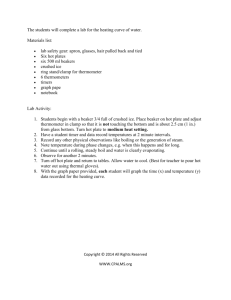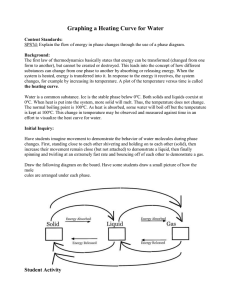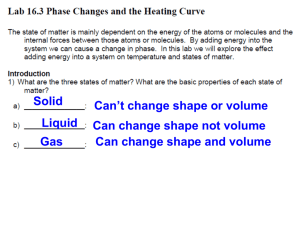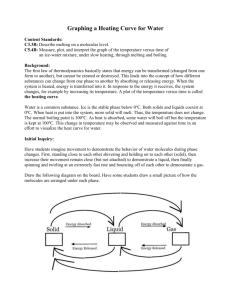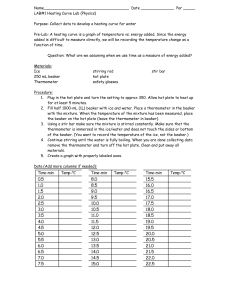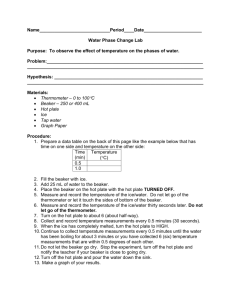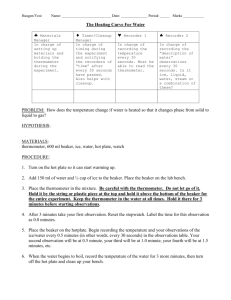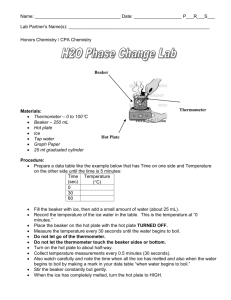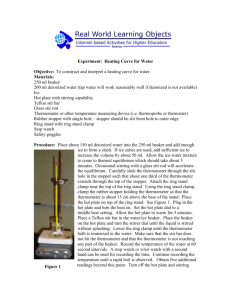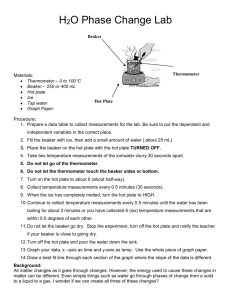SNC1D: Graphing the Melting and Boiling point of Water
advertisement
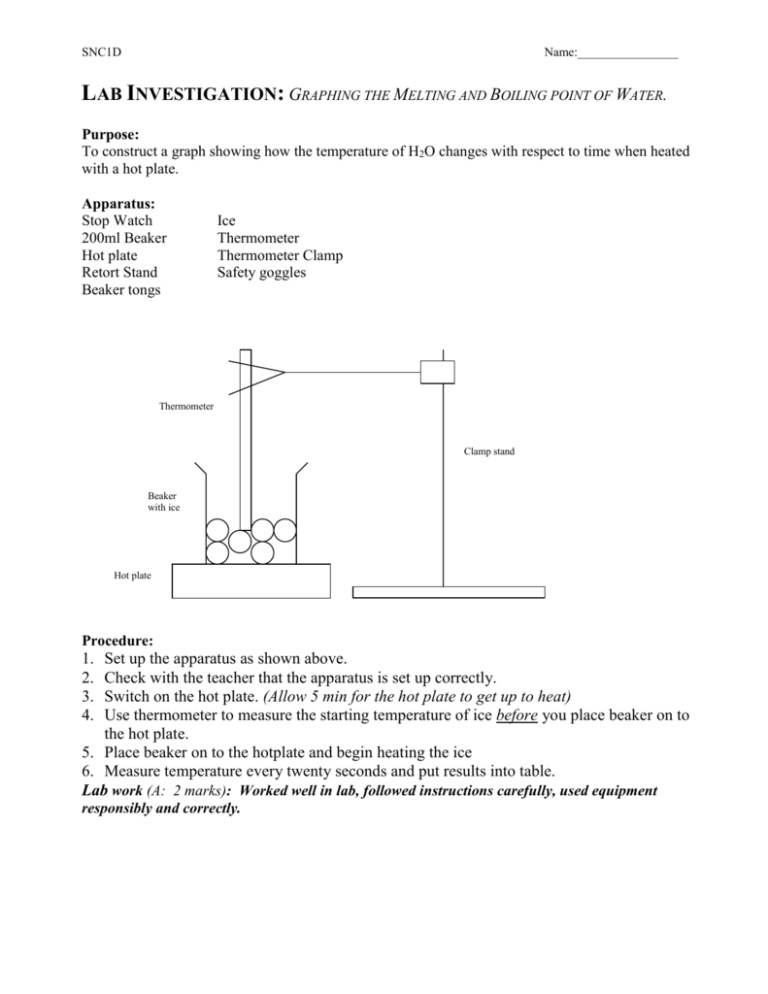
SNC1D Name:________________ LAB INVESTIGATION: GRAPHING THE MELTING AND BOILING POINT OF WATER. Purpose: To construct a graph showing how the temperature of H2O changes with respect to time when heated with a hot plate. Apparatus: Stop Watch 200ml Beaker Hot plate Retort Stand Beaker tongs Ice Thermometer Thermometer Clamp Safety goggles Thermometer Clamp stand Beaker with ice Hot plate Procedure: 1. 2. 3. 4. Set up the apparatus as shown above. Check with the teacher that the apparatus is set up correctly. Switch on the hot plate. (Allow 5 min for the hot plate to get up to heat) Use thermometer to measure the starting temperature of ice before you place beaker on to the hot plate. 5. Place beaker on to the hotplate and begin heating the ice 6. Measure temperature every twenty seconds and put results into table. Lab work (A: 2 marks): Worked well in lab, followed instructions carefully, used equipment responsibly and correctly. SNC1D Name:________________ Results: (C: 2 mark) Temperature (ºC) Time (s) 0 20 40 60 80 100 120 140 160 180 200 220 240 260 280 300 320 340 360 380 400 420 440 460 Temperature (ºC) Time (s) 480 500 520 540 560 580 600 620 640 660 680 700 720 740 760 780 800 820 840 860 880 900 920 940 Using the data above, construct a graph of temperature versus time, with temperature measured on the y-axis and time on the x-axis. (Be sure to remember to include: a title, and labeled axis with the units) (C: 4 marks) SNC1D Name:________________ Analysis Questions: 1. Describe at ONE source of experimental error while performing the experiment. An experimental error is NOT a human error. It is a limitation of the experiment setup or equipment that would prevent you from obtaining accurate results. (A: 1 mark) 2. If you could perform this experiment again, what is one change you would make to reduce the risk of experimental error described in #1? (A: 1 mark) 3. Describe what is happening to the water molecules as they are heated and changing state. For full marks, describe TWO ways the molecules are changing. (KU: 2 marks) 4. If you were to place the red bulb of the thermometer just above the surface of the boiling water, what temperature reading would you expect? Explain. (T/I: 1 mark)
